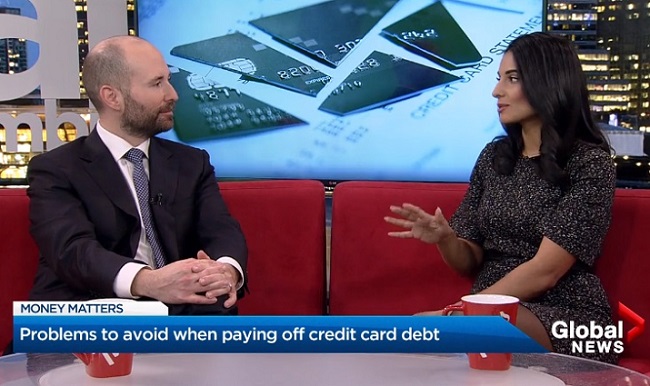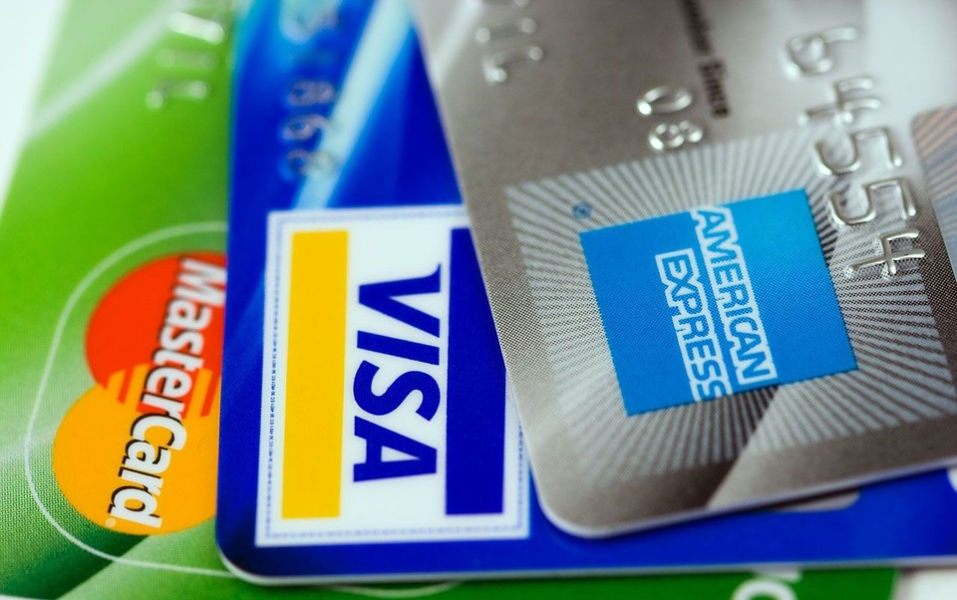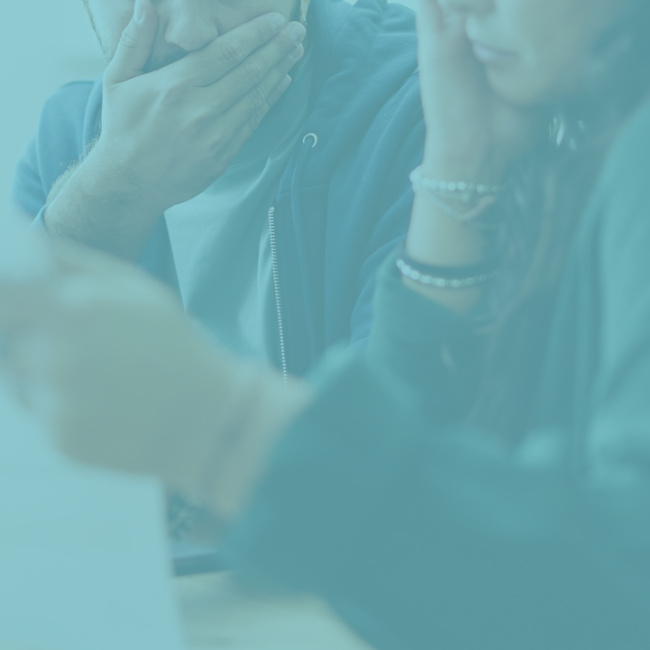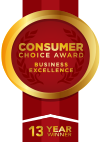As Licensed Insolvency Trustees, every day we help people achieve a financial fresh start free from the burden of debt. Although there are many types of debts that Licensed Insolvency Trustees can help individuals and businesses resolve, one of the most common areas of concern for people looking for debt solutions is how best to manage their credit card debt. If you are exploring options to pay off credit card debt or are looking to have your credit card debt forgiven altogether, read on to learn about credit cards and bankruptcy – and where you can get debt help in BC.
Credit Card Use Before Bankruptcy
With virtually every major bank and retailer offering consumer credit cards, it’s no surprise that most Canadians seem to have at least one. Although credit cards may be considered a common type of debt to carry, many people end up reliant on using credit cards for day-to-day purchases or bridging the gap between their income and expenses, which often makes credit card debt the first debt to become unmanageable.
Sands & Associates’ annual BC Consumer Debt Study found that credit card debt was the main type of debt carried by over 55% of BC residents who later filed a bankruptcy or made a Consumer Proposal to deal with their debts.
Before starting a bankruptcy, many people are up to date on their credit card payments and have no indicators on their credit history that they are having difficulty paying their debts. Often an unexpected event such as a job loss or illness pushes strained finances into emergency, while other people may find themselves triggered to take action on their debts due to the feeling of constant stress about how they will pay off their debts.
Some common early warning signs that credit cards or other debts may become a problem later, potentially leading up to bankruptcy include:
- Avoiding your credit card balances while carrying multiple credit cards with balances owing.
- Regularly using credit cards to borrow, rather than as a substitute for paying with cash/money you already have.
- Shuffling money from one credit card to another to make your payments or using other forms of credit such as an overdraft or payday loan to pay your credit card.
- Only being able to make minimum monthly payments towards your balance, or just slightly more than the minimum payments required.
Licensed Insolvency Trustees can offer debt advice and solutions regardless of your account standings – there is no need to wait until your situation has reached a critical state to get debt help. Connect with a BC Licensed Insolvency Trustee from the comfort of your home and get started with a plan to be debt-free today.
What Happens to Credit Cards During Bankruptcy
When your bankruptcy filing officially starts you will turn in your credit cards (including those with a zero balance) to your Licensed Insolvency Trustee, who will then return them to the credit card issuer. The exception to this is if you have a credit card that was issued to a third party such as your employer or spouse.
After your legal bankruptcy documents have been signed and registered with the Office of the Superintendent of Bankruptcy, your Licensed Insolvency Trustee will contact your credit card lenders and other creditors to advise them of your bankruptcy filing. This will result in an immediate stay of proceedings – meaning your creditors will be prohibited from contacting you for payment or charging you further interest on your accounts. Once you have worked through the bankruptcy process and received an official discharge, or release, from bankruptcy your credit card (and virtually all other) debts will be forgiven.
Most bankruptcies will last for 9 months from the date of signing to the official discharge, during which time you will generally:
- Complete a monthly budget form tracking your income and expenses.
- Have two private financial counselling sessions.
- Provide your Licensed Insolvency Trustee with any applicable tax information so they can get your tax returns filed and caught up if necessary.
- Pay a monthly cost of $200 per month for the 9-month period until you are discharged.
How Much Does it Cost to Declare Personal Bankruptcy? Learn More Here
Can I Get a Credit Card During Bankruptcy?
Although we would generally recommend against applying for any new credit until after your bankruptcy is completed, you are permitted to apply for a new credit card at any point during the bankruptcy process. The requirement is that if you are applying for credit of $1,000 or more you disclose to the potential lender that you are not yet discharged (released) from bankruptcy. This “undischarged” status must be disclosed whether or not you are specifically asked (in addition to any other qualifying questions that may be posed).
Obtaining a secured credit card or prepaid credit card is an alternative to a regular credit card that people may use during (and even after) bankruptcy.
Mortgage renewals during and after bankruptcy are normally approved provided your account is up to date and in good standing. Can you Keep your House if you File Bankruptcy? Learn More Here
Settle Credit Card Debt Without Bankruptcy
Many people who want to simplify their debt repayment understand it can be a good idea to consolidate credit card debt to streamline their payments and establish a manageable interest rate for borrowing. Unfortunately, many people also believe their choices in dealing with debts are limited to deciding between consolidation loans and bankruptcy. The reality is not only can you file bankruptcy to settle a credit card debt, in Canada you can alternatively avoid bankruptcy and consolidate without borrowing by making a Consumer Proposal to your creditors.
If you are able to make some payments towards your debts, consolidation with a Consumer Proposal can be far less costly and much faster to get you out of debt than by taking out a consolidation loan through a bank.
Here’s how a Consumer Proposal works:
- A Licensed Insolvency Trustee will help you craft a debt settlement offer to your creditors consolidating your debts and proposing an amount that you will repay, in full settlement of all your debt.
- Virtually all types of debt can be part of a Consumer Proposal offer – from credit cards to tax debt, student loans and more.
- Your creditors will have 45 days to consider your proposal – if a majority (by dollar value) agree to your proposal, it will become legally binding on all your creditors.
- Because Consumer Proposals provide for repaying some of your debt (unlike in a bankruptcy, where creditors often receive nothing), they are almost always accepted.
- Your creditors will automatically be required to stop charging you further interest on your debts and will not be able to pursue you directly for additional payments.
- Normally Consumer Proposals lay out monthly payment terms, which can vary greatly depending on your circumstances – anywhere from a single lump-sum payment, to monthly payments over a period of up to five years; terms of 24 to 36 months are very common.
- You can pay off your Consumer Proposal early at any time, with no penalty.
- Because a Consumer Proposal consolidates without borrowing, there are no financing or interest fees.
- Licensed Insolvency Trustee costs are strictly set by government tariff and are paid out of the funds your creditors will receive. There are no additional costs or professional fees payable when you make a Consumer Proposal, you only pay what you are offering to your creditors.
- Once your Consumer Proposal has been completed, the unpaid balance of those debts will be written-off/forgiven by your creditors – you are now debt-free!
Learn About 3 Types of Debt Consolidation in Canada
Getting a Credit Card After Bankruptcy
Bankruptcy in no way permanently prevents you from obtaining new credit, and credit history and scores can change dramatically within a few short years. For many people, the relatively short time needed to finish bankruptcy and re-establish their credit history is often much faster than if they tried to pay off the unmanageable debt (with interest) on their own. A credit card is often the first type of new credit people will obtain once their bankruptcy is complete.
As part of your bankruptcy process, two private financial counselling sessions will take place, providing you with knowledge, tools, and resources that you can use once your bankruptcy is complete:
- When establishing new positive credit history many Licensed Insolvency Trustees suggest starting with a low limit secured credit card, issued by a lender who will report your transactions to credit bureaus.
- Around the one-year post-bankruptcy mark you may be more likely to obtain a standard unsecured credit card at “best rates”.
Credit Scores After Bankruptcy
Having filed personal bankruptcy in Canada will be reflected on your credit history for 6 years from the date that you are discharged from bankruptcy. Regardless of this notation, it is quite possible to get new credit before your bankruptcy “expires” from your credit history.
Many people find that their income, savings, or other factors are satisfactory qualifying factors for lenders when applying for a new credit card. In addition to credit cards, it is not uncommon for individuals to be granted financing for a new vehicle and even a new mortgage within two or three years of being discharged from bankruptcy.
Applying for a New Credit Card
When you’re ready to get a secured credit card or a standard credit card after your bankruptcy is complete, consider these few factors before you start submitting credit card applications:
- Have you already reviewed your credit history for errors?
- Be sure that your credit reports are accurate. It is quite common to find errors or incorrect information that can cause a delay in getting new credit or impact the lending terms. Access Credit Bureau Request Forms here.
- What rates are being offered for borrowing?
- Understand the interest rates and any annual fees you will need to pay before accepting any new credit, whether the lender you consider is standard or sub-prime. If you don’t yet qualify for affordable terms, consider whether you can wait a while longer.
- Will you be able to pay off the balance in full and on time each month?
- It can be a good idea to start small, keeping your limits low on new cards – you can then prove to yourself and your lender that you can stick to your monthly budget and use your credit well. Being able to manage your new credit is key to staying on top of your debt and making the most of your financial fresh start.
Debt Help in BC
Debt-stress can take a serious toll if you’re struggling to manage your credit cards or other debts. A Licensed Insolvency Trustee can work with you to assess your situation and evaluate potential solutions so you can take charge and get back on track. Although many people think their recourse amounts only to bankruptcy, there are other debt options we will help you explore and consider as well. As the only debt management professional legally empowered and endorsed by the government to assist people with their debts, we’re here to ensure you get the information you need so you can make the best choice for your unique situation. No judgment, just solutions!
Ready to get a plan to be debt-free? Connect with a local BC Licensed Insolvency Trustee for a free confidential debt consultation.






